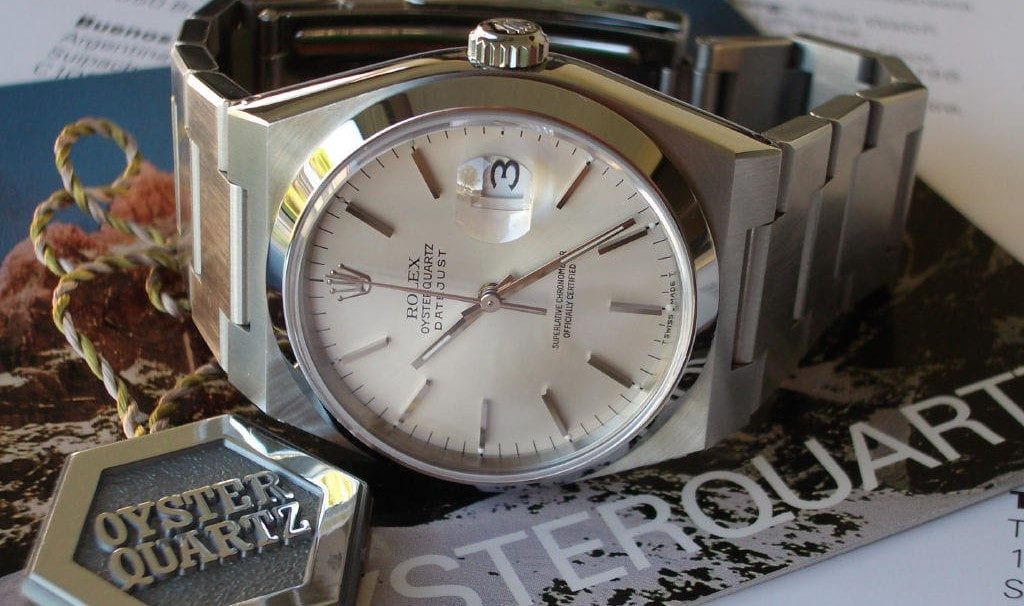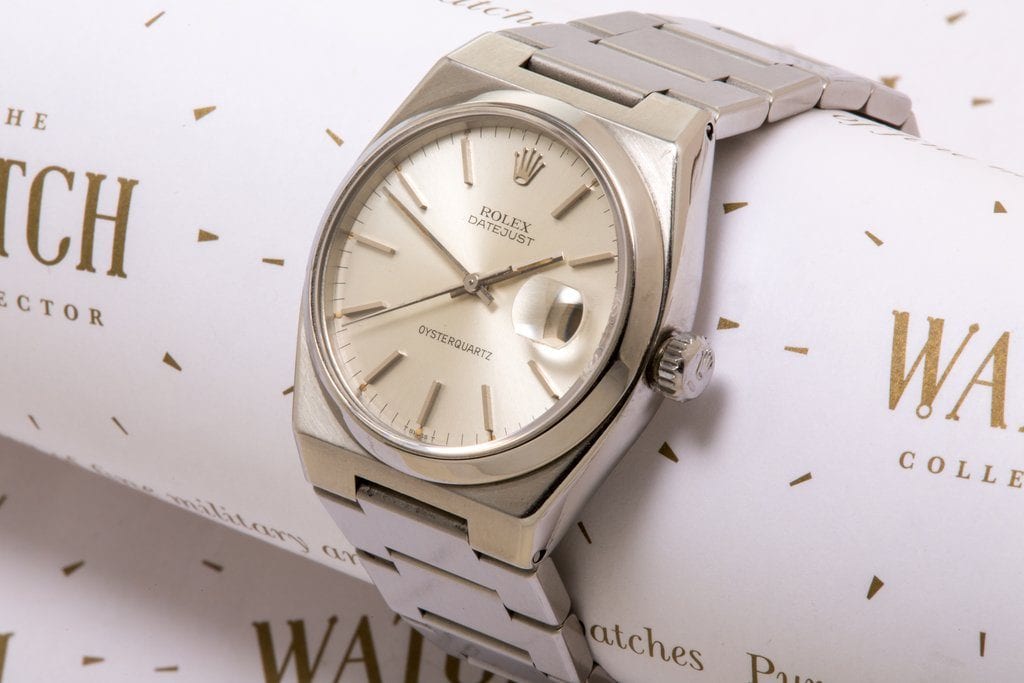Rolex Oysterquartz

The 1970s were a strange and tumultuous time for Swiss watchmakers. Japanese quartz made its commercial debut at the beginning of the decade and it was essentially an uphill battle from there. Originally throwing their hat in with other Swiss watchmakers, Rolex lent resources to the development of the Beta 21 movement—which had commercial releases across Swiss brands by 1970. Rolex’s first jaunt into quartz watches with the Beta 21 made it difficult to retain certain recognizable features with their case design. Ditching their “Oyster” case design to accommodate this new and shared movement took some of the wind out of Rolex’s sales. So by 1972 they turned their R&D toward an in-house quartz movement. This movement, upon its release, would be known as the “Oysterquartz”.
Rolex Quartz Beginnings
As mentioned above, Rolex started out its quartz ventures with the Beta 21 movement. 20 Swiss watchmaking houses (“maisons” in French) began work on this in the 1960s. Originally founded in 1962, Patek Philippe organized these houses under the name Centre Electronique Horologique (CEH). Hoping to stay ahead of the curve regarding electronic watch tech—Rolex and all other brands involved were inspired by the first commercial release of electronic watches in the late 1950s Having the resources and the finalized Beta 21 available by 1970, Rolex progressively put 1,000 of their Quartz Date 5100 watches into production. After the 5100’s limited release Rolex began in-house development of their first Oysterquartz watch. The development of the models 5035 and 5055 took five years—each seeing their release in 1977.
Five years of R&D really shines through on these original Oysterquartz watches. Having spent half a decade designing and engineering them, Rolex released the 5035 and 5055 watches with the same gusto as a high-end mechanical watch. In fact, they’re the only Rolex quartz watches to feature Geneva stripes on the movement. This marking is a horological flourish that solidifies these premiere Oysterquartz watches as truly polished timepieces.
25 Years of Rolex Oysterquartz

A surprising aspect of Rolex’s foray into quartz is that it lasted so long, considering that the Quartz Crisis rocked Swiss watchmaking for decades. It’s a serious testament to Rolex’s brand power, their engineering, and their ability to keep themselves relevant in a market that’s swimming in inexpensive quartz movements. So continuing, Rolex followed up their stellar 5035 and 5055 Oysterquartz watches with their Datejust and Day-Date models. The Datejust models, as they still exist, are the 17000 (stainless steel), the 17013 (steel and yellow gold), and the 17014 (steel and white gold). Day-Date Oysterquartz watches in all gold were labeled as 19018 (yellow gold) and 19019 (white gold). The last of these date-centric models officially sold through Rolex was the Datejust 17000. It received its final catalog listing from the brand in 2001—and sold its last unit in 2003. Coming in just under the 26 year mark from the original Oysterquartz release, this last 17000 model Datejust was a solid anchor for their quartz run.
Although this was the official end for Rolex quartz, there was a mysterious quartz Rolex sold at auction in 2004. Insiders and industry analysts believe this sale was tied to two in-house movements that Rolex had developed to follow up with previous quartz models. However, it’s been 15 years without any new Rolex quartz releases—so it’s likely that they’ve pushed this aspect of their brand out entirely.
Into the Future
Rolex is by no means a quartz-centric brand. Their quality is established primarily in their exquisite mechanical movement design. With that in mind, their masterful crafting has translated well to every single one of their quartz endeavors. Each of the estimated ~25,000 Oysterquartz watches made has sold and retained a high level of value. With pop culture iconography and stellar aesthetics, Rolex will likely continue to take the wrists of consumers on for plethora years onward. With that in mind, perhaps they’ll find a new way to reinvent their brand through quartz. Until then, each quartz model is more of a collector’s piece. Just make sure to have the paperwork to go along with it.
Times Ticking has been in operation for more than 30 years, since 1982. We have performed watch repair for customers both locally and internationally. If it Ticks! We KNOW it! Our team of watch repair technicians have a combined experience in watchmaking of over 120 years.

